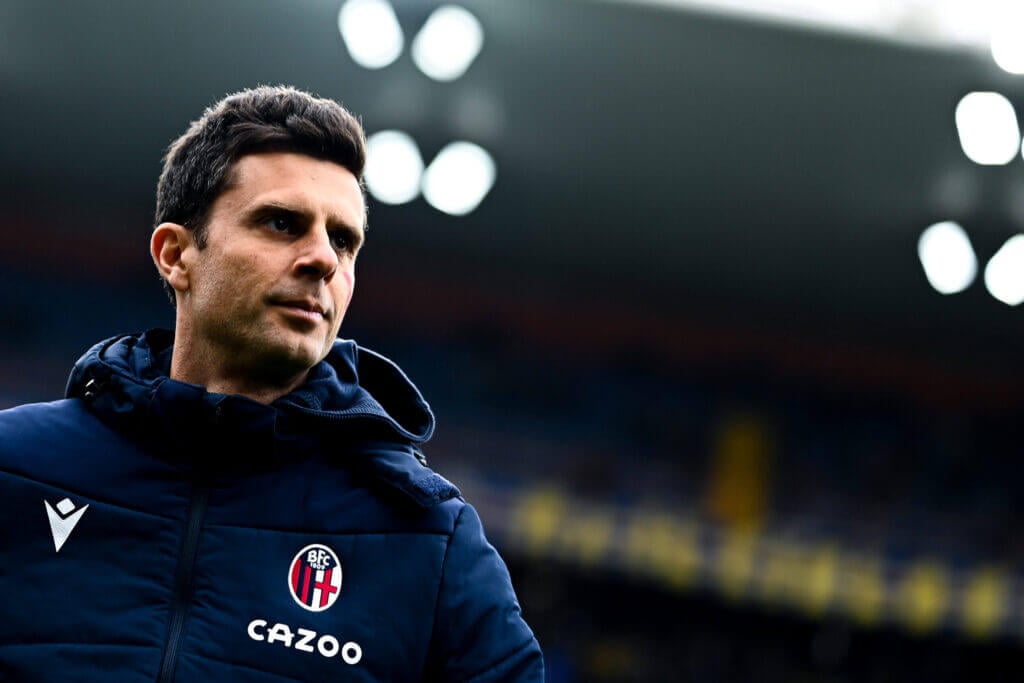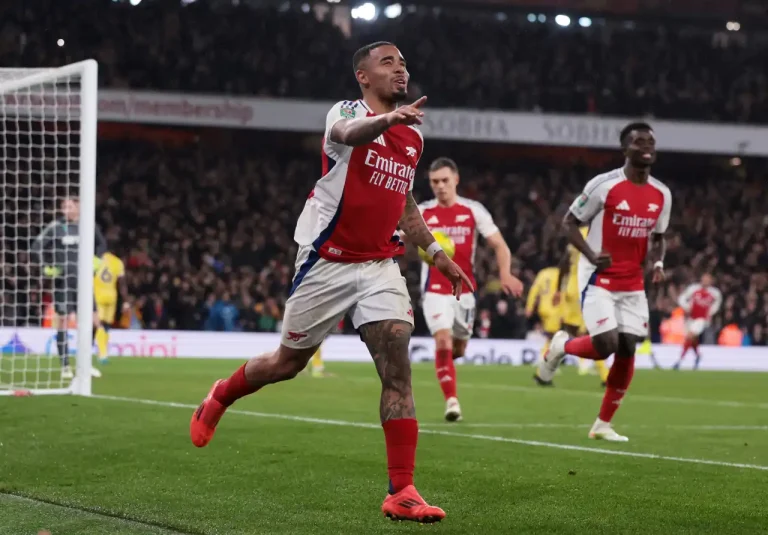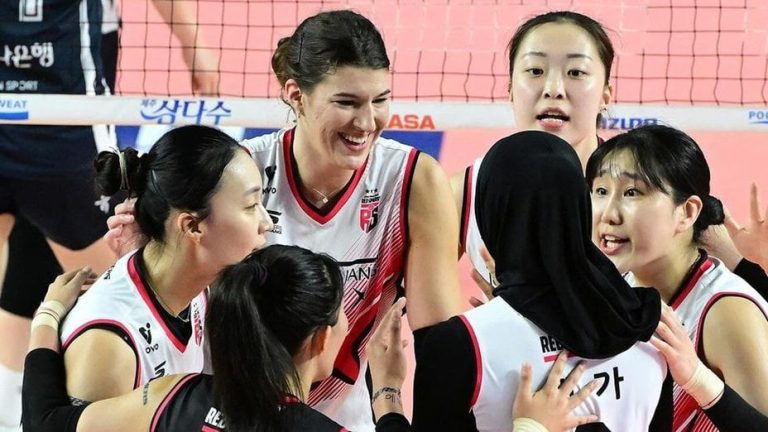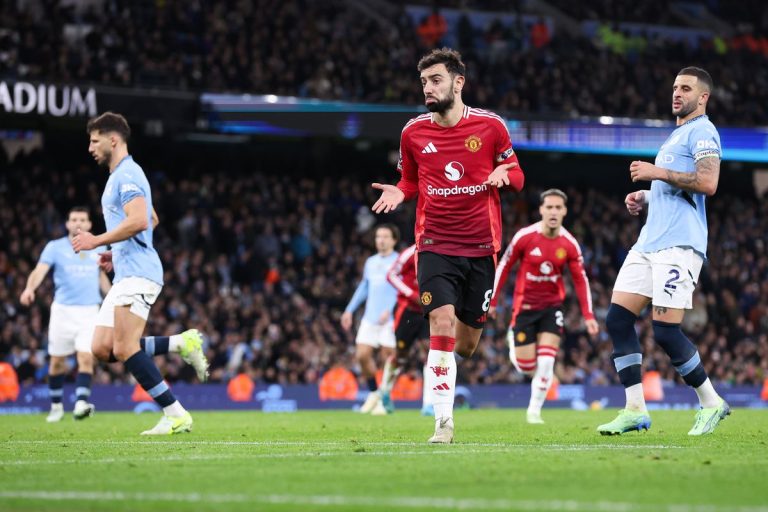Bologna FC has achieved big steps by reaching fourth place in the 2023/24 Serie A standings so far. Bologna has only dropped points twice at home from five defeats so far this season. An achievement that was last achieved when winning the scudetto (Serie-A title) in 1963/64.
In fact, they lost many key players last season, such as Jerdy Schouten, Marko Arnautovic, Nicolas Dominguez and others. But in fact, Bologna’s game is able to attract the interest of football fans because Thiago Motta is the main coach.
The man born 28 August 1982 has created a unique and effective game pattern. Especially in his ability to control the team system with good individual qualities. This cannot be separated from his experience when he was still a professional player. When he was a player, Motta was known for his football intelligence.
Born and started his junior football career in Brazil with Juventus-SP. Then go on an adventure to Europe by playing in the Spanish, Italian and French leagues. This means that this former Italian National Team player has studied a lot of football philosophy.
Motta also brings a unique tactical perspective to his coaching role at Bologna. His playing philosophy seems to combine tiki-taka, space exploitation and pressing in the style of Germany and Marcelo Bielsa. The main aspect of Bologna itself is the art of building attacks from their ball control style.
Lewis Ferguson et al also have the second highest possession of the ball in Serie A so far this season at 56%. So now, Bologna has developed into one of the most progressive teams in Italy.
Despite having a brilliant professional playing career, Motta’s emergence as a coach was not accompanied by easy things. Especially when he discussed the idea of a 2-7-2 formation which refers to the players horizontally or seen from behind the goal.
Many media responded to Motta’s statement by imagining a 2-7-2 formation. But most of them are mistaken because they see it from the sidelines.
“Counting from right to left, that would be 2-7-2. Goalkeeper, I put him in the middle seven. For me, the striker is the first defender while the goalkeeper is the first attacking player. Play starts from the goalkeeper, through his feet, and the forwards press to win the ball back.” said Motta to La Gazzetta dello Sport.
Motta was also underestimated when he was appointed as Bologna coach in September 2022. He didn’t win a single win in his first four matches. The standard 3-5-2 formation was changed to 4-2-3-1 and focused on maintaining possession of the ball and quickly regaining it when it was lost.
This style earned Motta a lot of praise for showing an interesting style of ball control play. Slowly, Bologna was able to get out of the relegation zone and end the season in ninth place in the 2022/23 Serie A. This achievement is the highest in the last 11 years after the era coached by Francesco Guidolin.
This achievement made Motta attract the attention of several big clubs. He is also predicted to replace Stefano Pioli at Milan or Xavi at Barcelona. He is even projected to become Inter Milan coach if Inzaghi leaves the club in the future.
Even though he often uses a 4-2-3-1 or 4-3-3 formation, Motta often rotates his team’s attack and defense structures. This man who was born in Brazil often instructs different formations which often confuses his opponents. In essence, Motta often adapts depending on his opponent’s formation like Bielsa does.
“I don’t like to compartmentalize formations too much because it can be tricky. A team can play offensively in a 5-2-3 formation and play defensively in a 4-3-3 formation. It all depends on the quality of the players on the field,” said Motta.
This adaptation was made because Motta wanted an advantage in the number of players to defeat his opponent’s defense area. Like when building an attack from behind. Motta arranged his team with a 4-2-5 formation involving the goalkeeper. The goalkeeper joins the defender to form a line of four players at the back and two players in the middle sector.
In this formation it looks like a 2-7-2 when viewed horizontally or from the direction of the goal. However, it was different when Bologna built a high line attack because the formation was 3-5-2. This attack formation is what Motta instructed his team the most.
Bologna shows many examples of tactics in practice that provide many benefits from the results on the field. Namely how the players are able to overcome pressure starting from their own defense line, then pass the ball to the front line. Exploring the strategy designed by Motta is indeed very complicated, but he displays the football philosophy of a great coach.
The complexity of building attacks and defensive structures has also shown Motta’s influence on the team’s strategic evolution. The fluidity and adaptability shown by Bologna under Motta’s guidance also illustrates the players’ commitment to a modern and dynamic style of play.
An emphasis on ball control, positional play and meticulous defensive solidity, is embedded in Motta’s coaching philosophy. It manages to promise an interesting journey into the strategic dimensions of this beautiful game. Motta’s achievements were not short so he was able to lead Bologna as the new giant in Serie A.
In fact, Bologna itself was a big Serie A club in the past. The proof is that they collected seven Serie A titles from the 1920s to the 1960s. Then he won the Intertoto Cup (now the European Conference) in 1998/99 and became a destabilizer at the top of Serie A in the early 2000s.
With Motta, history might repeat itself. But one thing is certain, no one is mocking Motta’s 2-7-2 now.
ASL
















